Geochang Wolseong Space Creative Science Museum (거창월성우주창의과학관)
0m 0 2024-02-23
1312-96 Deogyuwolseong-ro, Buksang-myeon, Geochang-gun, Gyeongsangnam-do
Geochang Wolseong Space Creative Science Museum serves as an interactive science museum, providing opportunities for knowledge acquisition and hands-on experiences related to the universe. The facility is well-equipped for celestial observation, featurig key components like the Astronaut Center, Space Exploration Center, and Celestial Observation Center. Visitors can engage in various experiential programs, including activities such as donning AR space suits, coloring their own universe, and experiencing sensory balance.
Wolseonggyegok Valley (월성계곡)
591.540562709519m 64041 2024-02-23
Wolseong-ri, Buksang-myeon, Geochang-gun, Gyeongsangnam-do
Wolseonggyegok Valley is formed by the eastward flow of Wolseongcheon Stream, creating a remarkable landscape as the water winds around rocks and cliffs, earning it the nickname Geochang's Sogeumgang. Though narrow, the valley boasts a deep mountain terrain with abundant water flow. At the entrance of the valley, there are notable sites like Gangseondae Overlook, where it is said that immortals descended from heaven to enjoy the scenery, as well as the ancient Moamjeong and Deoksanjeong Pavilions.
Chiryeongyegok Valley (칠연계곡)
8.7 Km 19500 2024-04-07
608, Chiryeon-ro, Muju-gun, Jeonbuk-do
+82-63-323-0577
Chiryeongyegok Valley is situated behind Tongan Village in Anseong-myeon near Deogyusan Mountain. While not as famous as the valley in Gucheon-dong, the valley boasts a beautiful array of waterfalls, oddly shaped rocks, and ponds. The best known attraction is Chiryeonpokpo Falls, meaning “seven falls connected to pools.” There, pure water flows gently, moving from one pool to the next.
Jungon Head House
9.1 Km 803 2021-04-09
13, Gangdong 1-gil, Wicheon-myeon, Geochang-gun, Gyeongsangnam-do
+82-10-2518-4727
Located in Geochang County in Gyeongsangnam-do Province, the Head House of Mr. Jeong On shows a peculiar style of ancient Korean architecture. Since the house is located in a basin surrounded by high mountains, it was built in overlapping style as the typical architectural style in the northern region in order to endure the cold. In addition, the "eyebrow" roof was added as protection from the frequent rain. The house is mainly visited by families on weekends and research organizations on weekdays. Visitors can enjoy various healing and cultural activities in the trekking course of Mt. Geumwonsan and the Suseungdae Amusement Park, which are 1km away. The Anchae is used by the owner family, and the Sarangchae, Jungmunchae, and Daemunchae are used as guest rooms. Groups can rent the entire Sarangchae building.
Geochang Suseungdae Rock (거창 수승대)
9.5 Km 13838 2020-08-28
2, Eunhari-gil, Geochang-gun, Gyeongsangnam-do
+82-55-943-5383
Suseungdae Rock is located near Hwangsan Village in Geochang-gun, Gyeongsangnam-do. The rock was originally called Susongdae Rock during the Three Kingdoms Era when it served as the final stop for envoys sent from Baekje to Silla. The name later changed to Amgudae Rock during the reign of Joseon King Jungjong. It wasn't until 1543 that it was called Suseungdae Rock. There are many historical and cultural sites in the area relating to the Geochang Sin family.
Wonhak Goga (Wonhak Old House) [Korea Quality] / 원학고가 [한국관광 품질인증]
9.8 Km 10637 2019-12-05
109-5, Hwangsan 1-gil, Wicheon-myeon, Geochang-gun, Gyeongsangnam-do
+82-10-5359-2224
Located in Geochang, Wonhak Goga (Wonhak Old house) is regarded as the most beautiful hanok, or traditional Korean house, in the village of Hwangsan. Designated as Folk Material No. 17 in recognition of its value as a historic material, it is the largest and best preserved noble house in Gyeongsangnam-do Province, and is currently managed by Park Jeong-ja, the wife of the eldest son of the head family. It was originally opened to the public for the annual Keochang International Festival of Theater (KIFT) as there was insufficient accommodation to lodge the thousands of visitors to the festival. Therefore, the county suggested that Park provide people with a hanok accommodation to promote the village’s traditions. Accepting the suggestion, Park renovated the house by expanding the sarangchae room installing a modern-style washroom, and providing clean high-quality bedding. The house itself consists of seven structures in total including the anchae, sarangchae, jungmunchae, gotganchae, a tall gate, and a rear gate. Both the sarangchae and anchae have a half-hipped roof. Notably, the sarangchae has a total area of 99m2 and features a large girder and a round foundation stone. This traditional hanok house also boasts high-quality, refined interior decoration. The Geochang area is well known for both the Suseungdae scenic point, whose splendid surroundings include pure crystalline water, rocks, and a pine grove, and the Keochang International Festival of Theatre (KIFT) which is held every summer. After passing the main gate of the Suseungdae scenic point, in Whicheon-myeon, Gaochang-gun, and continuing along the road, visitors will come to Hwangsan Village, where a 600-year-old-zelkova tree welcomes them. In addition, visitors can enjoy the mural paintings created as part of a public art project by Geochang County while walking along the 1.2km-long stonewall (designated as a Gyeongsangnam-do Folk Material). The village of Hwangsan consists of two districts, one of which contains about fifty 100- to 200-year-old hanok houses, as well as Wonhak Goga, which has stood at the center of the village for about 500 years. Wonhak Goga, or the Old House of the Shin Clan, was originally built by Shin Gwon (pen-name Yosu), but was then demolished and rebuilt by Shin Jong-sam, a 10th-generation descendant of the family, in 1927. It is also a renowned family house and has remained a symbol of the family’s wealth and authority for many generations. Park’s father-in-law, Shin Do-seong, was a member of the National Assembly and worked as the Ministry of Unification, while her husband, Shin Wi-beom, worked as a school juristic person, gaining people’s confidence and trust. Furthermore, the house stands in an auspicious location in terms of geomantic principles, according to which the family’s descendants will have a peaceful and prosperous life for the next 400 years. Park hopes that guests will enjoy their stay amid the serene atmosphere of this old hanok house.
Deogyusan National Park (Namdeogyu Section) (덕유산국립공원(남덕유분소))
10.2 Km 30003 2021-07-13
Sojeong-ri, Geochang-gun, Gyeongsangnam-do
+82-63-322-3174
Designated as a national park in 1975, Deogyusan National Park covers four counties. Besides Hyangjeokbong Peak, Deogyusan Mountain's highest peak in Muju, all the other peaks lie within Geochang. While the park features beautiful waters and rocks at Wolseonggyegok Valley in Buksang-myeon, Geochang, it also boast nature's beauty in Muju with creeks and valleys like Mahakdong Valley, Sangyeodeomgyegok Valley, and Songgyesa Valley.
Seonggwansa Temple (성관사)
11.0 Km 7760 2024-04-07
492-83, Jangmu-ro, Jangsu-gun, Jeonbuk-do
+82-63-353-0396
Seonggwansa Temple is located in Jangsu-gun in Jeollabuk-do. It is said that the temple was established during the Goryeo dynasty (918-1392). The temple was designated as a traditional temple in July 1999.
Hyangjeokbong Peak (Deogyusan Mountain) (향적봉(덕유산))
11.0 Km 41098 2024-04-07
1 Deoksan-ri, Anseong-myeon, Muju-gun, Jeonbuk-do
Hyangjeokbong Peak, standing at an elevation of 1,614 meters, is the highest peak of Deogyusan Mountain. It is an ideal destination for hiking year-round, but particularly renowned for its breathtaking winter scenery, earning a reputation as a popular spot for snow-covered mountain hikes. Visitors can reach the summit of Hyangjeokbong Peak by taking a gondola from the nearby Muju Resort to Seolcheonbong Peak, then embarking on a roughly 20-minute hike from Seolcheonbong Peak. Even beginners can enjoy the fantastic views of Deogyusan Mountain without much difficulty, contributing to its popularity.
The Thirty Three Sights of Mujugucheondong Valley (무주 구천동 33경)
11.5 Km 101945 2024-04-07
580 Baengnyeonsa-gil, Seolcheon-myeon, Muju-gun, Jeonbuk-do
The Thirty Three Sights of Mujugucheondong Valley refers to thirty three scenic spots along the route from Seokmo Mountain's Rajetongmun Gateway to Baengnyeonsa Temple on Deogyusan Mountain. Visitors can witness spectacular rock formations and rare flora and fauna in the primeval forest. It's recommended to explore from the sight 1 Rajetongmun Gateway to the sight 14 Sugyeongdae Valley as a driving route, while exploring from the sight 15 Wolhatan Valley to the sight 33 Hyangjeokbong Peak as a trekking route.

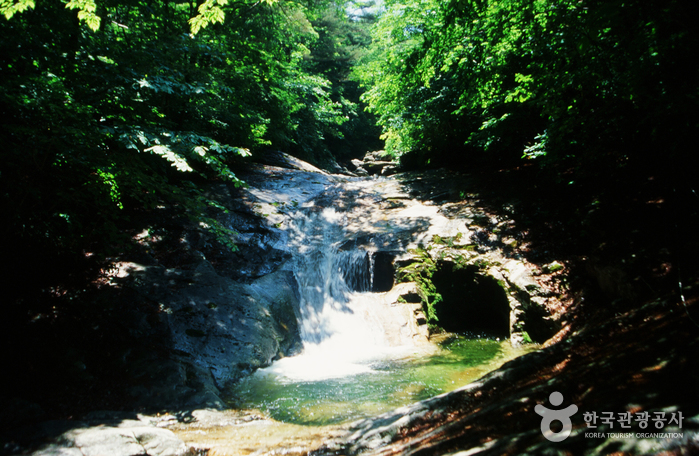
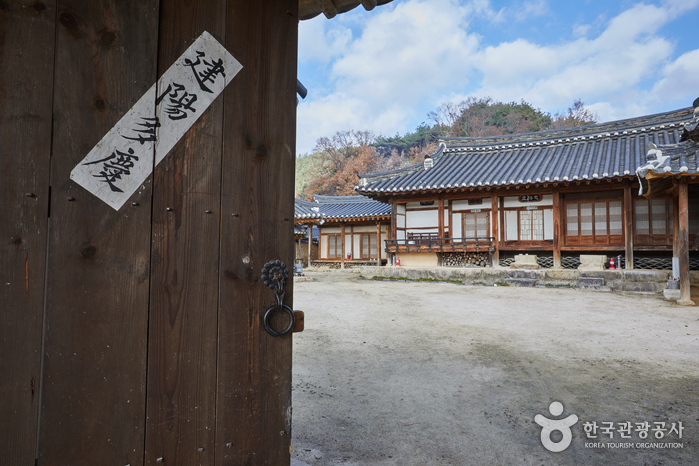
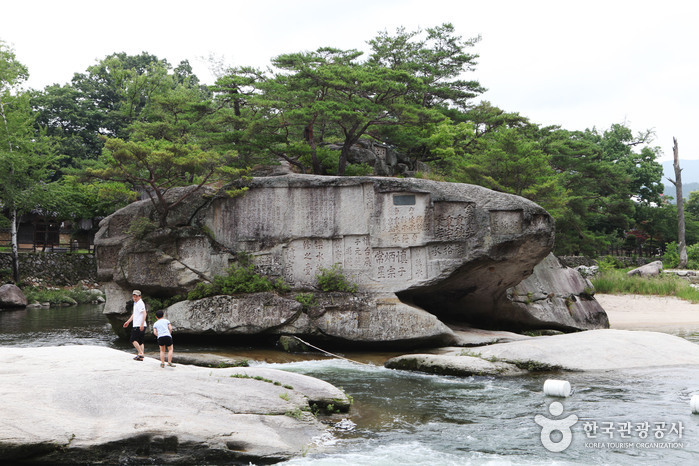
![Wonhak Goga (Wonhak Old House) [Korea Quality] / 원학고가 [한국관광 품질인증]](http://tong.visitkorea.or.kr/cms/resource/13/2572413_image2_1.jpg)
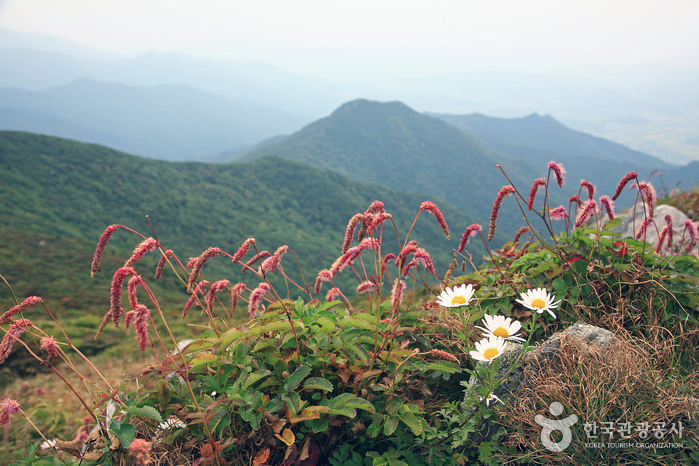
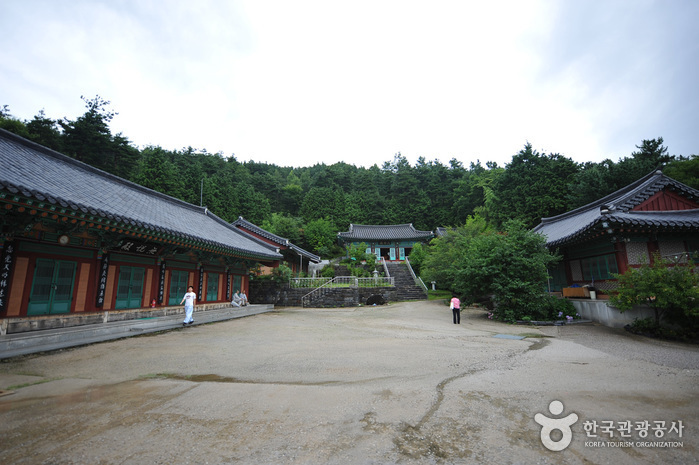
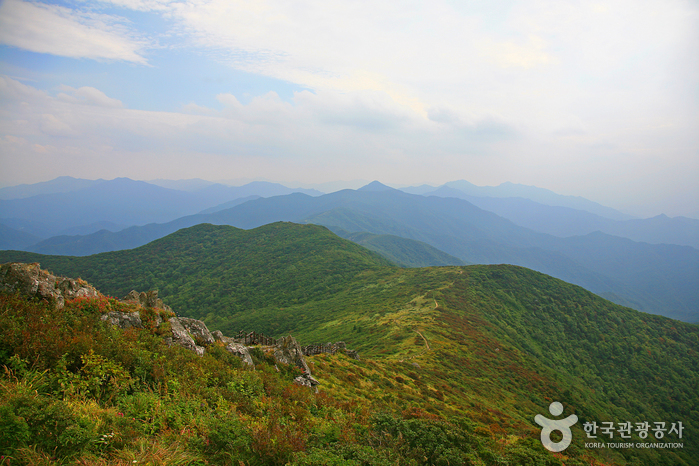
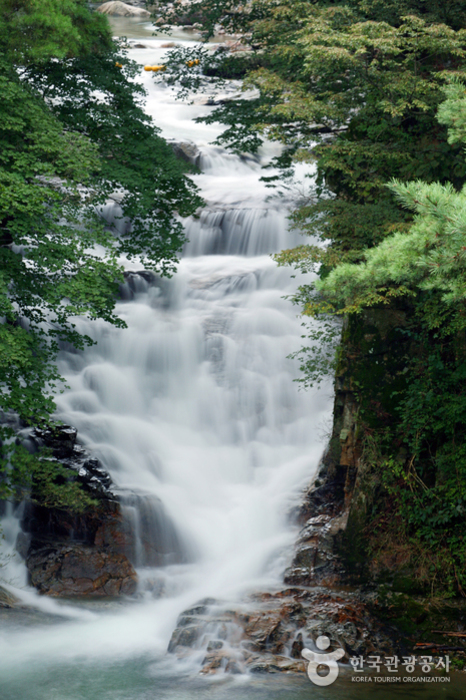
 English
English
 한국어
한국어 日本語
日本語 中文(简体)
中文(简体) Deutsch
Deutsch Français
Français Español
Español Русский
Русский